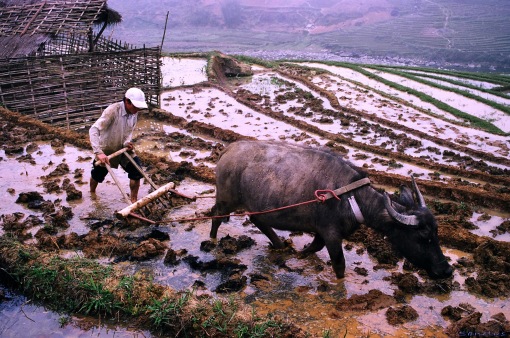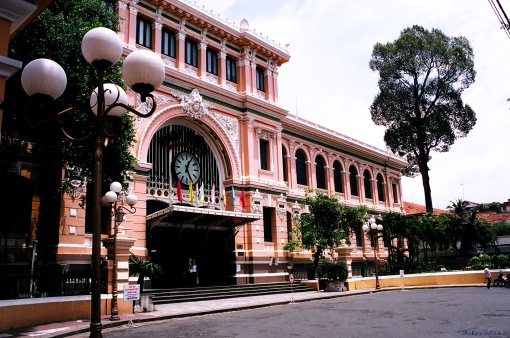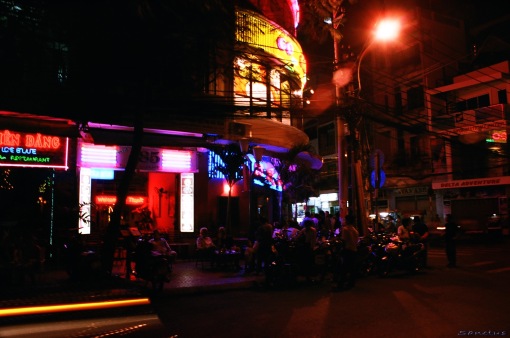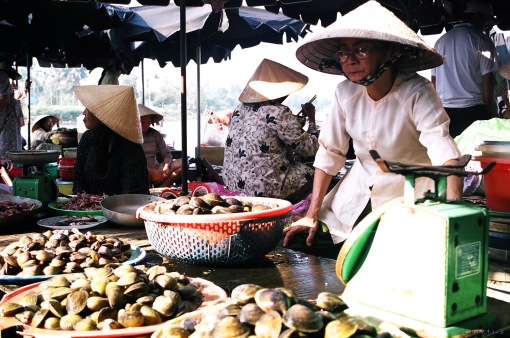Hmong People
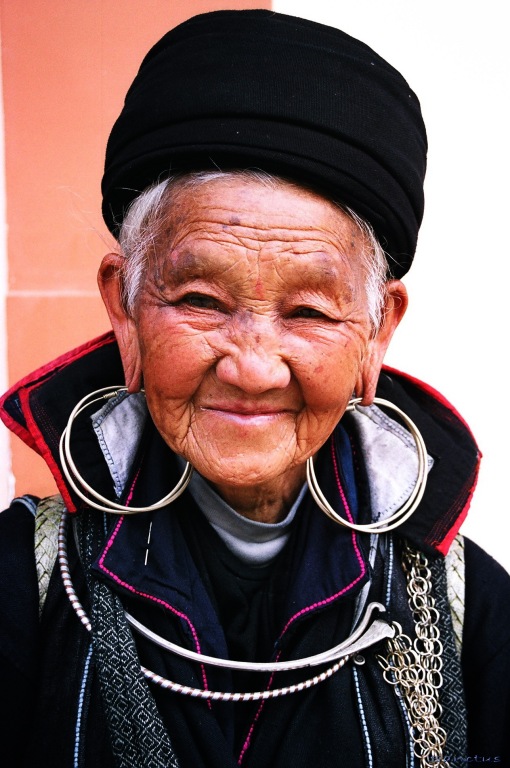
Hmong People – Vietnam – 2006
The terms Hmong (pronounced [m̥ɔ̃ŋ]) and Mong ([mɔ̃ŋ]) refer to an Asian ethnic group in the mountainous regions of southeast Asia. Hmong are also one of the largest sub-groups in the Miao minzu population in southern China. Beginning in the 18th century, Hmong groups began a gradual southward migration due to political unrest and to find more arable land. As a result, Hmong currently also live in several countries in Southeast Asia, including northern Vietnam, Laos, Thailand, and Myanmar-Burma.
In Laos, a significant number of Hmong/Mong people fought against the communist-nationalist Pathet Lao during the Secret War. When the Pathet Lao took over the government in 1975, Hmong/Mong people were singled out for retribution, and tens of thousands fled to Thailand for political asylum. Since the late 1970s, thousands of these refugees have resettled in Western countries, mostly the United States, but alsoAustralia, France, French Guiana, and Canada. Others have been returned to Laos under United Nations-sponsored repatriation programs. Around 8,000 Hmong/Mong refugees remain in Thailand.[3]
Hmong people have their own terms for their subcultural divisions, “White Hmong” (Hmong Der) and “Green” or “Blue Mong” (Mong Leng) being the terms for two of the largest groups. In the Romanized Popular Alphabet, developed in the 1950s in Laos, these terms are writtenHmoob Dawb (White Hmong) and Moob Leeg (Green Mong). The doubled vowels indicate nasalization, and the final consonants indicate with which of the eight lexical tones the word is pronounced. White Hmong and Green Mong people speak mutually intelligible dialects of the Hmong language with some differences in pronunciation and vocabulary. One of the most obvious differences is the use of the aspirated /m/ in White Hmong (indicated by the letter “h”) not found in the Green Mong dialect. Other groups of Hmong/Mong people include the Black Hmong (Hmoob Dub), Striped Hmong (Hmoob Txaij/Hmoob Quas Npab), Hmong Shi, Hmong Pe, Hmong Pua, and Hmong Xau.[4]
Since 1949, Miao has been an official term for one of the 55 official minority groups recognized by the government of the People’s Republic of China. The Miao live mainly in southern China, in the provinces of Guizhou, Hunan, Yunnan, Sichuan, Guangxi, Hainan, Guangdong, Hubei, and elsewhere in China. According to the 2000 census, the number of ‘Miao’ in China was estimated to be about 9.6 million. The Miao nationality includes Hmong/Mong people as well as other culturally- and linguistically-related ethnic groups who do not call themselves either Hmong or Mong. These include the Hmu, Kho (Qho) Xiong, and A Hmao. The White Miao (Bai Miao) and Green Miao (Qing Miao) are both Hmong/Mong groups.
Usage of the term “Miao” in Chinese documents dates back to the Shi Ji (1st century BC) and the Zhan Guo Ce (late Western Han Dynasty). During this time, it was generally applied to people of the southern regions thought to be descendants of the San Miao kingdom (dated to around the 3rd century BC.) The term does not appear again until the Ming dynasty (1368–1644), by which time it had taken on the connotation of “barbarian.” Interchangeable with “man” and “yi,” it was used to refer to the indigenous people of the south-western frontier who refused to submit to imperial rule. During this time, references to Raw (Sheng) and Cooked (Shu) Miao appear, referring to level of assimilation and political cooperation of the two groups. Not until the Qing dynasty (1644–1911) do more finely grained distinctions appear in writing. Even then, discerning which ethnic groups are included in various classifications can be problematic.[5] This inconsistent usage of “Miao” makes it difficult to say for sure if Hmong/Mong people are always included in these historical writings. Linguistic evidence, however, places Hmong/Mong people in the same regions of southern China that they inhabit today for at least the past 2,000 years.[6] By the mid-18th century, classifications become specific enough that it is easier to identify references to Hmong/Mong people.
In Southeast Asia, Hmong/Mong people are referred to by other names, including: Vietnamese: Mèo or H’Mông; Thai: แม้ว (Maew) or ม้ง (Mong);Burmese: mun lu-myo. “Mèo“, or variants thereof, is considered highly derogatory by many Hmong/Mong people and is infrequently used today outside of Southeast Asia.[7]
Because the Hmong lived mainly in the highland areas of Southeast Asia and China, the French occupiers of Southeast Asia gave them the name Montagnards or “mountain people”, but this should not be confused with the Degar people of Vietnam, who were also referred to as Montagnards.
